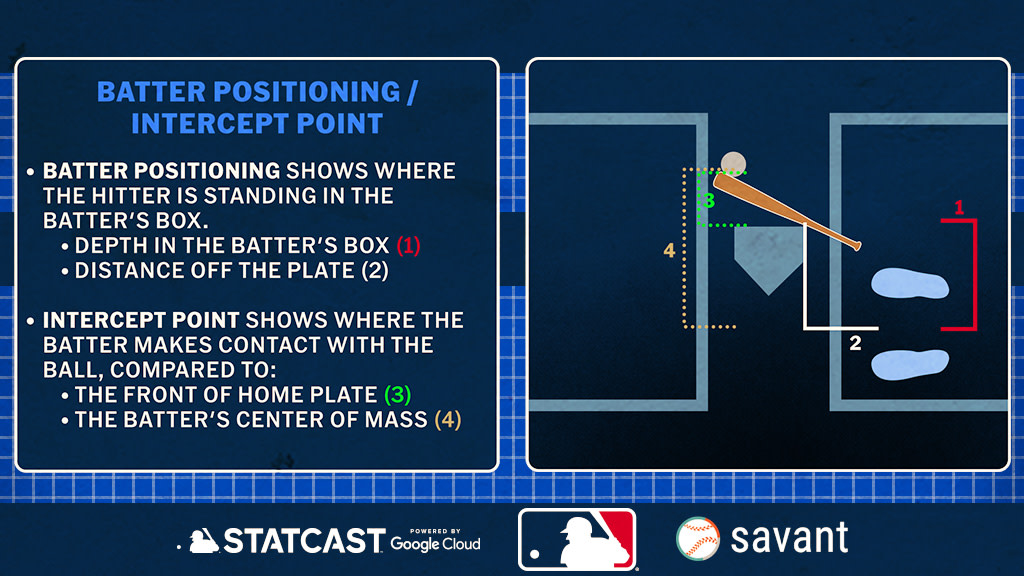Intercept Point
Definition
Intercept point (or contact point) shows where the hitter makes contact with the ball -- or where the bat and ball pass nearest to each other, in the case of a swing-and-miss.
Statcast shows each hitter's intercept point compared to:
- The front edge of home plate
- The batter's center of mass (defined as the midpoint between his hips)
Because a hitter's contact point depends partly on where they are standing in the batter's box, both versions of the intercept point are reported. For example, a hitter who stands far back in the batter's box might make contact behind home plate, but still in front of his own body. Conversely, a hitter who stands far up in the box might make contact well out in front of home plate, but at a deeper point compared to his own batting stance.
Intercept point can be tracked for all competitive swings, batted balls or swings-and-misses.
Types of contact point
Intercept point data allows us to compare batters who ”°hit the ball out in front”± -- either in front of home plate, or in front of their body -- to batters who ”°let the ball get deep.”±
Hitters with an ”°out-in-front”± contact point will often be fly-ball hitters or pull hitters. Hitters tend to generate the most home run power when they hit the ball out in front, because such a contact point allows them to pull the ball in the air, and allows their bat to reach a higher bat speed over the course of the swing. Many ”°pull power”± hitters have contact points far out in front of the plate or their bodies, such as Jose Altuve, Nolan Arenado, Justin Turner or Isaac Paredes.
- Altuve had one of the farthest out-in-front contact points compared to home plate in 2024 -- he made contact an average of 16 inches in front of the plate on his batted balls.
- Turner had one of the farthest out-in-front contact points compared to his own body -- he made contact an average of 38.7 inches in front of his center of mass.
Hitters with a ”°deep”± contact point will often be all-fields, or opposite-field hitters. Many hitters with ”°all-fields power”± have deeper contact points, such as Freddie Freeman, Shohei Ohtani, Juan Soto or Mike Trout.
- Ohtani had one of the deepest contact points compared to home plate in 2024 -- he made contact an average of 3.7 inches behind the front edge of the plate on his batted balls.
- Freeman had one of the deepest contact points compared to his own body -- he made contact an average of 26.1 inches from his center of mass.
Statcast intercept point leaderboard
Bat/ball intercept point data is available starting with the second half of the 2023 season. The current season leaderboard, which also includes batting stance data, can be viewed here.
